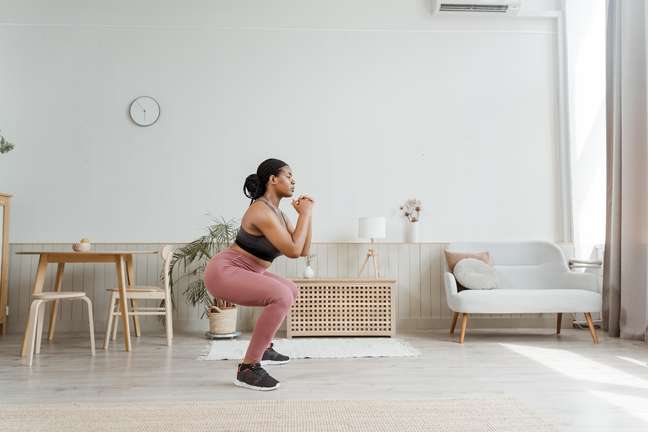If you train at home, it is essential to establish a specific space for training and seek follow-up whenever you have questions.
Since 2020, many of us are grappling with a common problem: our homes have become the environment in which we do everything. From the office to the gym, the home environment has undergone a series of adjustments due to the coronavirus pandemic and, although the reopening has already taken place, the scenario remains so for many people.

Speaking specifically of physical exercise, it is easy to enter a vicious circle like that of the home office: we transform our room into a gym, we put aside the practice because we do not have time or in any case we do exercise, because there are others. needs in the queue.
This is bad for many reasons, so we talked to the personal trainer Murilo Queiroz affiliate with GetNinjas, to understand how to set limits when your home doubles as a gym.
PHYSICAL EXERCISES AT HOME: IS IT WORTH DOING IT?
For the practitioner, when it comes to physical practices at home, the biggest difficulty he observes is knowing exactly where to start. Internet videos are usually the most common source of information in this case, but even so, people are unaware of what stage they are at and whether that recorded practice is right for them.
“Here’s what can cause problems and injuries,” Murilo explains. “Often the person sees a thin individual performing high impact exercises and promises to dry their tummy. However, the person watching the video is sedentary and overweight. Therefore, this is not the most suitable activity for them.”
In this way, a first fundamental step is to request a medical evaluation: having a multidisciplinary follow-up, even if punctual, is important to understand how your body is healthy, what is or is not suitable for this moment of your life. and what would be the most appropriate practices.
And all this, of course, must also be accompanied by a balanced diet, which offers support to physical practices, even if done at home and in a lighter way. The feeling of well-being and a healthy body will result from this sum, regardless of the intensity of the physical exercise.
Your goal with physical activity also matters here: if you’re looking to relax and calm down, yoga is better than a HIIT workout. If you want to gain energy for the day, running or jumping rope can be good options.
That said, let’s get to the practical part:
HOW TO SET LIMITS AND TRAINING GOALS AT HOME?
Do your homework
If you followed the previous guide, the second point would be to have classes suitable for your training stage. If you plan to train with the help of YouTube videos, you can find classes in many disciplines (from yoga to dance), for all phases. Make a selection of the ones that best suit your moment and keep them handy for the next step. It is also worth looking for lessons that take place online following these same premises.
plan yourself
The ideal is to know exactly how much time you can devote to physical activity. If you only have 30 minutes a day, there is no point in choosing one-hour yoga classes to practice during the week. Be realistic and match your class selection to the time you have available. Also remember to alternate the practices: one yoga day, another running day, the next a HIIT workout … this is important to offer different stimuli to the body.
Having an environment only for physical exercises
And preferably not in the same room you sleep in. This can generate contradictory mental signals and interfere with your sleep pattern, for example.
“The appropriate space and material are important for a person to get started and stay focused and disciplined,” Murilo continues. Whether it’s a specific corner of the room, a second bedroom, or even the building’s gym, determine the environment in which these exercises will be performed and leave the necessary materials there.
Follow the correct guidelines
We have already commented on this, but it is worth reinforcing: do not forget to follow and, if necessary, look for a physical education professional who will guide you in the best way to perform the movements or intensify the exercises.
“More important than the space is the follow-up on how to do the exercises and what they are intended for,” says Murilo. “The same exercise can vary from individual to individual based on the intensity, volume and stage of training.”
Know the limits of your body
Another very important point, according to the professional, is to pay attention to correct execution and avoid the necessary overloads in key areas of the body, such as the joints and the lumbar spine.
In addition, it is worth paying particular attention to the intensity of training, to avoid pushing the body to the limit, or, on the other hand, taking it too lightly, not offering stimuli that generate evolution in practices.
Source: Terra
Benjamin Smith is a fashion journalist and author at Gossipify, known for his coverage of the latest fashion trends and industry insights. He writes about clothing, shoes, accessories, and runway shows, providing in-depth analysis and unique perspectives. He’s respected for his ability to spot emerging designers and trends, and for providing practical fashion advice to readers.








